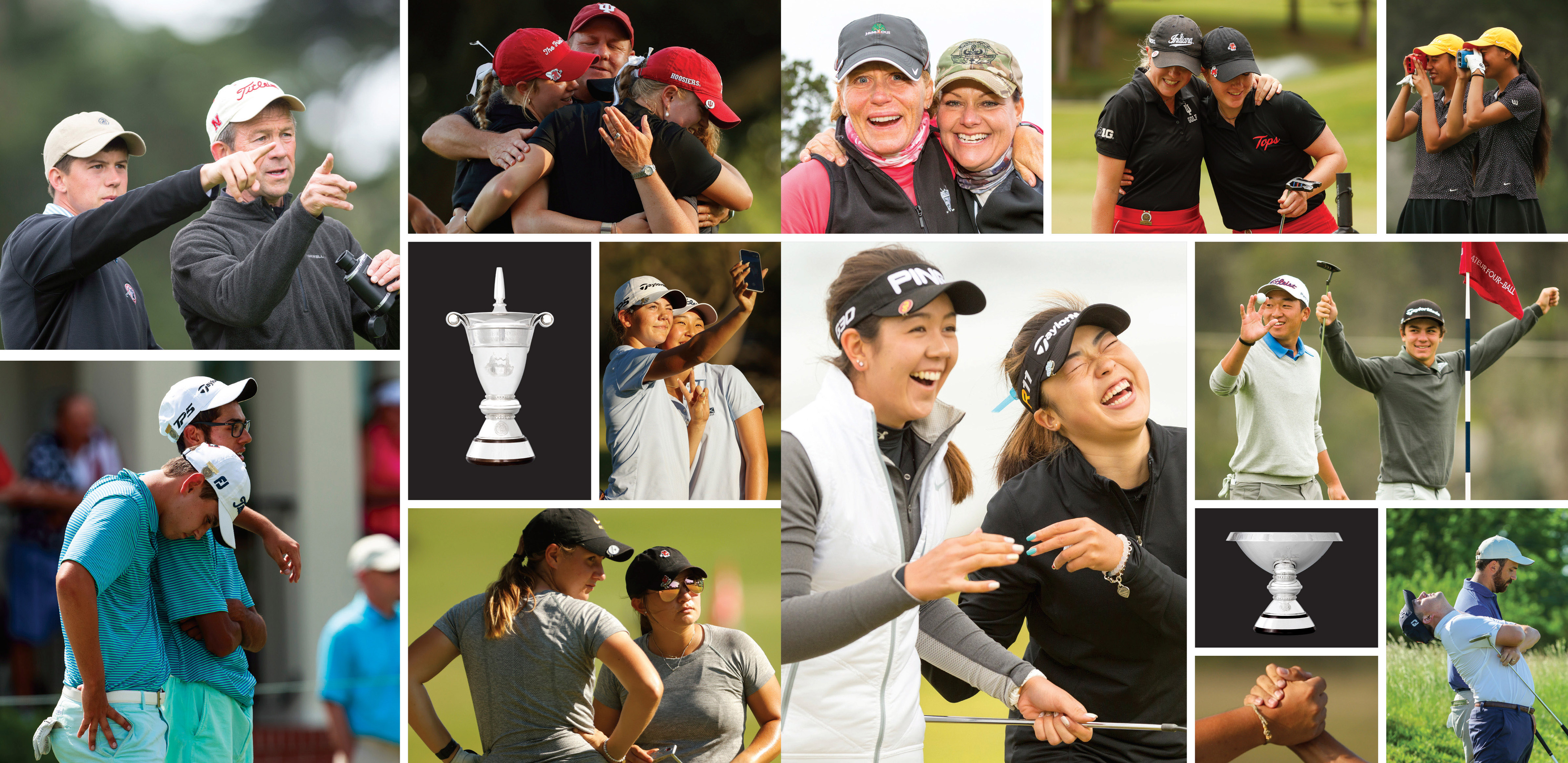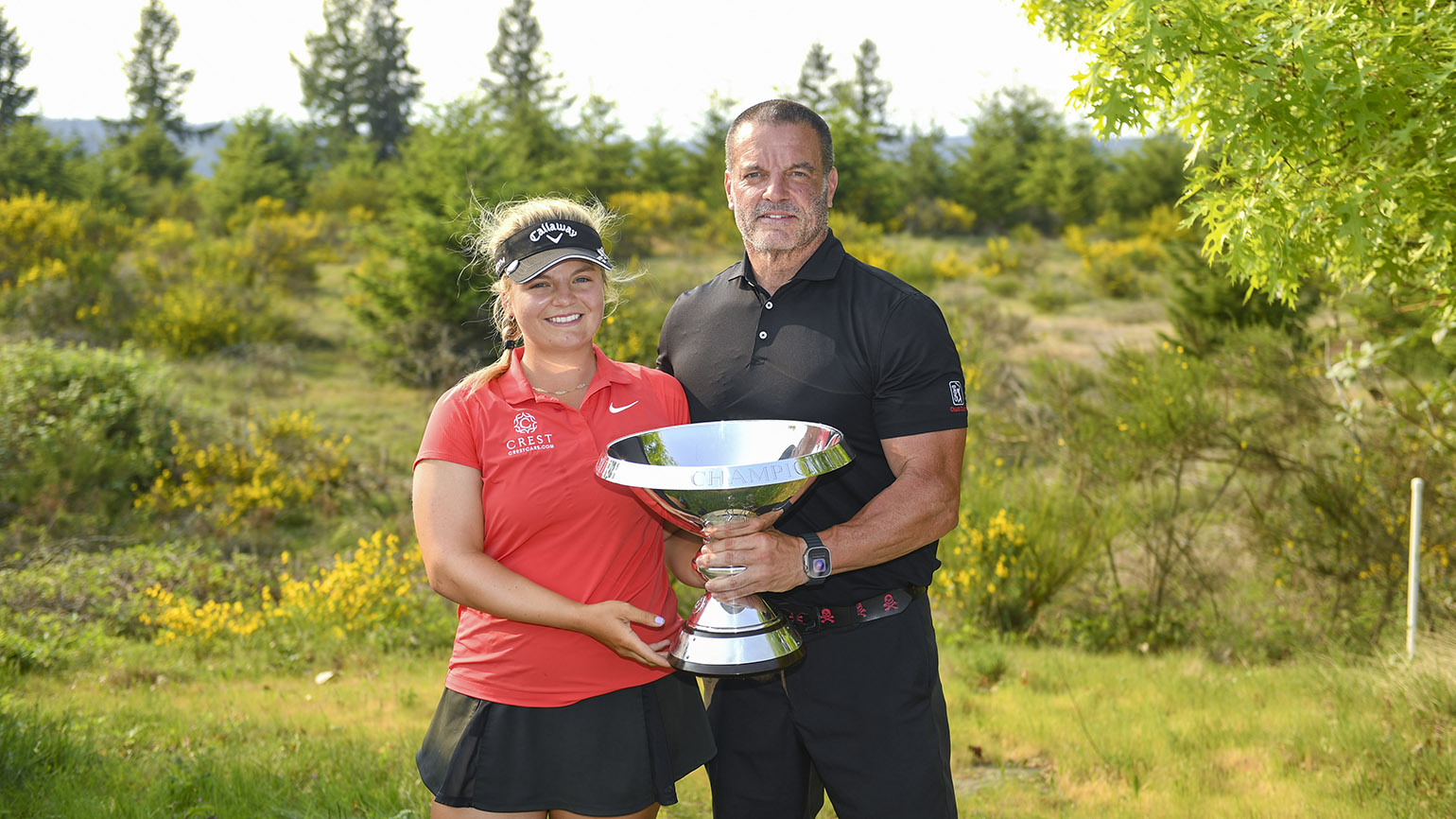3 Things to Know: 10th U.S. Women’s Amateur Four-Ball
The 2025 USGA championship season will be officially underway this weekend with the playing of the 10th U.S. Women's Amateur Four-Ball Championship at Oklahoma City Golf & Country Club, in Nichols Hills, Okla.
Sixty-four sides (128 players) will assemble in the Sooner State looking to survive 36 holes of stroke play (low 32 qualify) and five rounds of match play to become the 749th and 750th unique USGA champions.
Given the championship’s locale, expect breezy conditions to play a factor in determining the outcome;Rachel Sadowski, the director of the U.S. Women’s Amateur Four-Ball Championship, has incorporated that into her daily setup plan. Temperatures should be relatively comfortable as the average for this time of year is the mid-to-high 70s.
The Perry Maxwell design dates to 1929, although the club’s roots go back to 1911. The Oklahoma City Open was held here from 1926 to 1930, producing such champions as Craig Wood, Horton Smith and Harry “Lighthouse” Cooper. Past USA Walker Cuppers Charlie Coe and Allen Miller won Trans-Mississippi Amateur titles here in 1956 and 1970, respectively, and future U.S. Open winner Gene Littler won the 1953 U.S. Amateur at the venue. More recently, three-time U.S. Women’s Mid-Amateur champion and past Curtis Cup competitor and captain Sarah Lebrun Ingram claimed the 1994 Women’s Southern Amateur at OKCG&CC, and 1984 U.S. Mid-Amateur champ Mike Podolak captured the 1999 Trans-Mississippi Amateur here.
It also recently hosted the Jackson T. Stephens Cup, an elite college event.
The next chapter in the club’s history will unfold over the next five days. Here are 3 things to know before play begins:
The Young and the Talented
It’s no secret that the first nine iterations of the U.S. Women’s Amateur Four-Ball have been dominated by teenagers, and specifically those who have yet to matriculate into college. Only two of the nine winning sides have been collegians so far: Alice Chen and Taylor Totland, who had just extinguished their eligibility at Furman University; and Katrina Prendergast and Ellen Secor, a pair of Colorado State standouts.
The comparisons between the champions of the U.S. Women’s Amateur Four-Ball and its male counterpart (U.S. Amateur Four-Ball) are astonishing. The average age of the WAFB winners is 17.7 compared to 26.8 for the U.S. Amateur Four-Ball. In fact, no mid-amateur (25 and older) has advanced to a final; Lauren Greenlief and Alexandra Austin reached the semis in 2016 at Streamsong. On the men’s side, just one final (2019 at Chambers Bay) has not featured at least one mid-amateur.
Another group of highly talented juniors are among the sides in this year’s field, although defending champions Asterisk Talley and Sarah Lim withdrew from the championship on May 4. Texas native Avery Zweig, an 18-year-old headed to Texas A&M in the fall who won this title in 2023 with Gianna Clemente, is back but with a different partner. She is paired with 16-year-old Virginian Emerson Roychoudhury. Besides that duo, there’s U.S. National Junior Team member Amelie Zalsman and Auburn signee Charlotte Cantonis; Natalie Yen (Texas A&M) and Asia Young; and sisters Emerie (U.S. National Junior Team) and Avery Schartz.
Veteran’s Week?
If experience matters, then the handful of mid-amateur sides who have qualified have some hope of breaking through. It starts with four-time U.S. Women’s Mid-Amateur champion Meghan Stasi, of Fort Lauderdale, Fla., who is competing for a ninth time – but first with a new partner. The 2024 and 2026 USA Curtis Cup captain played the first eight championships with longtime friend Dawn Woodard. But with Woodard’s youngest daughter graduating from Clemson University the week of the competition, the 46-year-old Stasi looked to fellow Pine Valley member and multi-time club champion at The Olympic Club, Marissa Mar. Mar, 33, a former Stanford University player who recently relocated from the Bay Area to Houston, Texas, has played in a number of USGA championships, and the duo should be a formidable opponent if they can qualify for match play.
A couple of “veteran” sides could also pose a threat if they’re among the final 32 for match play. That group includes 2018 U.S. Women’s Mid-Amateur champion Shannon Johnson and Megan Buck (both from the Boston area); 2023 U.S. Women’s Mid-Am champ Kimberly Dinh and fellow Michigan resident Mary Janiga Kartes; and the twin sister duo of Jessica and Sarah Spicer (both ex-Virginia Tech standouts). Portland, Ore., residents and longtime friends Amanda Jacobs and Gretchen Johnson were late additions to the field. The duo competed a year ago in San Antonio, Texas.
Competitive Tuneup
A little less than two weeks prior to the championship, Ohio State All-American candidate Kary Hollenbaugh used her home-course advantage to the fullest by qualifying for the 80th U.S. Women's Open Presented by Ally. Playing New Albany (Ohio) Country Club, a venue where her father, Paul, is the head professional, the Buckeye junior bested the field of professionals and amateurs by posting 3-under 141 to garner one of the three available spots.
A week later, Hollenbaugh helped Ohio State earn a spot in next week's NCAA Championship at the Columbus (Ohio) Regional. The Buckeyes finished third behind Kansas and Arkansas at 1 over par. Hollenbaugh, meanwhile, tied for 10th in the individual standings.
Now she is hoping to carry that momentum into the Women's Amateur Four-Ball with partner Anna Ritter, a University of Illinois junior who competed in the same regional (T-32). The Illini finished ninth and did not advance.
Hollenbaugh, who comes into the Four-Ball at No. 20 in the latest Women's World Amateur Golf Ranking, and Ritter have enjoyed success as a tandem. The ex-New Albany High teammates were semifinalists three years ago in Puerto Rico.
For Hollenbaugh, the Four-Ball can serve as a competitive tuneup for the NCAAs, which begin May 16 in Carlsbad, Calif., and then the U.S. Women's Open at the end of the month at Erin Hills in Wisconsin.
Outside of possible fatigue from jetlag and all of the high-level events in the last few weeks, Hollenbaugh and Ritter should be competitively lathered for Saturday's opening round of stroke play.
David Shefter is a senior staff writer at the USGA. Email him at dshefter@usga.org.















